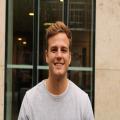
Her Majesty Queen Elizabeth II passed away on September 8 at the age of 96, announced following a brief statement made by Buckingham Palace.
Looking back, throughout her 70-year reign, Cambridgeshire has been a stomping ground for The Queen and her family.
Between London and Her Majesty's private country estate at Sandringham, Norfolk, the county has hosted Queen Elizabeth II and her family several dozen times.

The Queen's husband, Prince Philip, The Duke of Edinburgh, served as the Chancellor to the University of Cambridge for some 35 years between 1976 and 2011.
And since her ascension to the throne in 1952, Queen Elizabeth II visited the county - Cambridge, Ely, Duxford and the Newmarket races on the Suffolk border - on a regular basis.
The Queen made her first official visit as a monarch to the City of Cambridge in October 1955.

Speaking before the Queen's Platinum Jubilee earlier this year, Lord-Lieutenant of Cambridgeshire Julie Spence said: "Her most recent visit to our area was in 2019 to visit the National Institute of Agricultural Botany to see their leading work in crop research, and to formally open the new Royal Papworth Hospital in 2019, granting it the Royal honorific.
"I was privileged to be able to welcome her on that day on behalf of the county."
On October 20, 1955, Her Majesty visited the city to open the University of Cambridge's new Veterinary School, which now sits on Madingley Road in the city.


The Queen has had a lifelong love of animals, and was a patron of the Peterborough Foxhound Show Society.
She was a familiar face at the Newmarket races, and pictures from 1955 show her horses' strong performance in the 1,000 Guineas day.

In 1955, her filly Maple Leaf ran second to Ribambelle in the Littleport Stakes.
Her colt Pall Mall won the 2,000 Guineas in 1958, and among more successes, she won the 1,000 Guineas in 1974 with her filly Highclere.

She became patron of the former Newmarket Animal Health trust in 1959.
In 1962, Queen Elizabeth returned to Cambridge to open the Addenbrooke's Hospital site on Hills Road.

The hospital remains on the site, and has since become the centre of the Cambridge Biomedical Campus - which today houses the research and development arm of Covid-19 vaccine manufacturer AstraZeneca and cancer researcher IOTA Pharmaceuticals.
Ely Cathedral hit its 13th centenary in 1973, and Queen Elizabeth II visited the city in November to join the celebrations.

She watched 600 schoolchildren re-enact the Ely street festival which took place earlier the same year, and gave her blessing for Ely to remain a city during the local government reorganisation in the early-1970s.
She returned to Ely in 1987 for the Royal Maundy.

On Maundy Thursday - the day before Good Friday - the monarch ceremonially distributes coins as alms to elderly residents.
Crowds lined the city streets to see The Queen before the Eastertime celebration.
She visited Ely Cathedral again in 2009.
The American Air Museum in Cambridgeshire hosted Queen Elizabeth II in 1997 - when the collection at Duxford opened.

On her visit to the AAM, which is in the Imperial War Museum Duxford campus, Her Majesty sat with Dr Sheila Widnall, then-Secretary of the US Air Force and the first woman to head a branch of the US military.
In 2011, The Queen opened the Sainsbury Laboratory at the Cambridge University Botanic Garden.

The building won the Royal Institute of British Architects (RIBA) Stirling Prize in 2012, and scientists at the laboratory research the growth and development of plants.
In the same year, The Queen's husband was taken into Papworth Hospital, which was near Royston at the time, for a heart procedure on Christmas Eve.

The hospital relocated in 2019 to the Cambridge Biomedical Campus, near Addenbrooke's Hospital.
Queen Elizabeth II and the Lord-Lieutenant Julie Spence attended a ceremony to mark the new unit open, when it was renamed the Royal Papworth Hospital.



Comments: Our rules
We want our comments to be a lively and valuable part of our community - a place where readers can debate and engage with the most important local issues. The ability to comment on our stories is a privilege, not a right, however, and that privilege may be withdrawn if it is abused or misused.
Please report any comments that break our rules.
Read the rules here